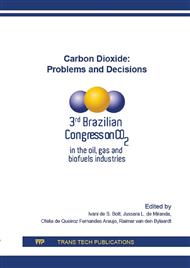p.30
p.38
p.46
p.57
p.65
p.71
p.78
p.85
p.95
Evaluation of Permeability Changes in a Carbonate Rock under Carbonate Water Flow
Abstract:
Carbon dioxide (CO2) injection in reservoirs promotes reactions which depend on rock nature, brine composition, partial pressure of CO2, reservoir temperature and pressure among other conditions. The reactions may cause changes in the petrophysics properties, including porosity and permeability, that are important parameters to the fluid flow. The present study focus on the effects of carbonated brine injection in carbonate rocks similar to pre salt reservoirs. The effects are evaluated through the changes of the rock absolute permeability provoked by the acidic action of the injected fluid. Experiments were designed to detail permeability changes along the length of a long carbonate core using using a coreholder equipped with multiple pressure taps. The experiments were conducted in dynamic regime, at the temperature of 22°C and at the mean pressure of 2,000 psi, at flow rates of 0.5; 1 and 2 cc/min. The results show significant permeability alterations at the different segments of the sample, which are also highly dependent on the injection rate.
Info:
Periodical:
Pages:
65-70
Citation:
Online since:
March 2016
Keywords:
Price:
Сopyright:
© 2016 Trans Tech Publications Ltd. All Rights Reserved
Share:
Citation:


